Working On: mending, pt. 2 - mostly darning
make it do, or do without!
Though I will patch a hole when I need to, I prefer darning. After a bit of practice, darning is simpler and more straightforward for me than patching, especially on knit fabrics. However, I will darn on woven fabrics too, especially thicker ones like tweeds where the weave can be replicated exactly with threads from the inside selvedges. There’s something satisfying and rather cute about a neatly-executed darn, in my opinion.
As we discussed last week, repaired clothing is exceedingly rare in museum collections. Instead, what we have is darning samplers.

Worked mostly by European and American schoolgirls from the 18th century through to the twentieth, darning samplers were used to practice and to show off mending skills. Needlework was an important part of a girl’s education, and that included darning - especially for working class girls, who would certainly need to repair their own clothing and might also anticipate earning a living from their skills. In their case, the sampler would function as a kind of résumé, exhibiting their abilities and experience.
(For higher-class girls, who wouldn’t have expected wages for their work, I suppose the darning sampler was simply an advertisement for themselves, indicating that they were industrious, and spent their time on useful things like precision needlework.)
Most samplers include examples of multiple kinds of darning, and various weaves. Plain-weave darns are featured, but also twills, tartans, and embroidered darns that look like jacquards. Most samplers also incorporate a few different types of repair, such as a mend of a central hole or tear in the fabric, as well as corner darns.
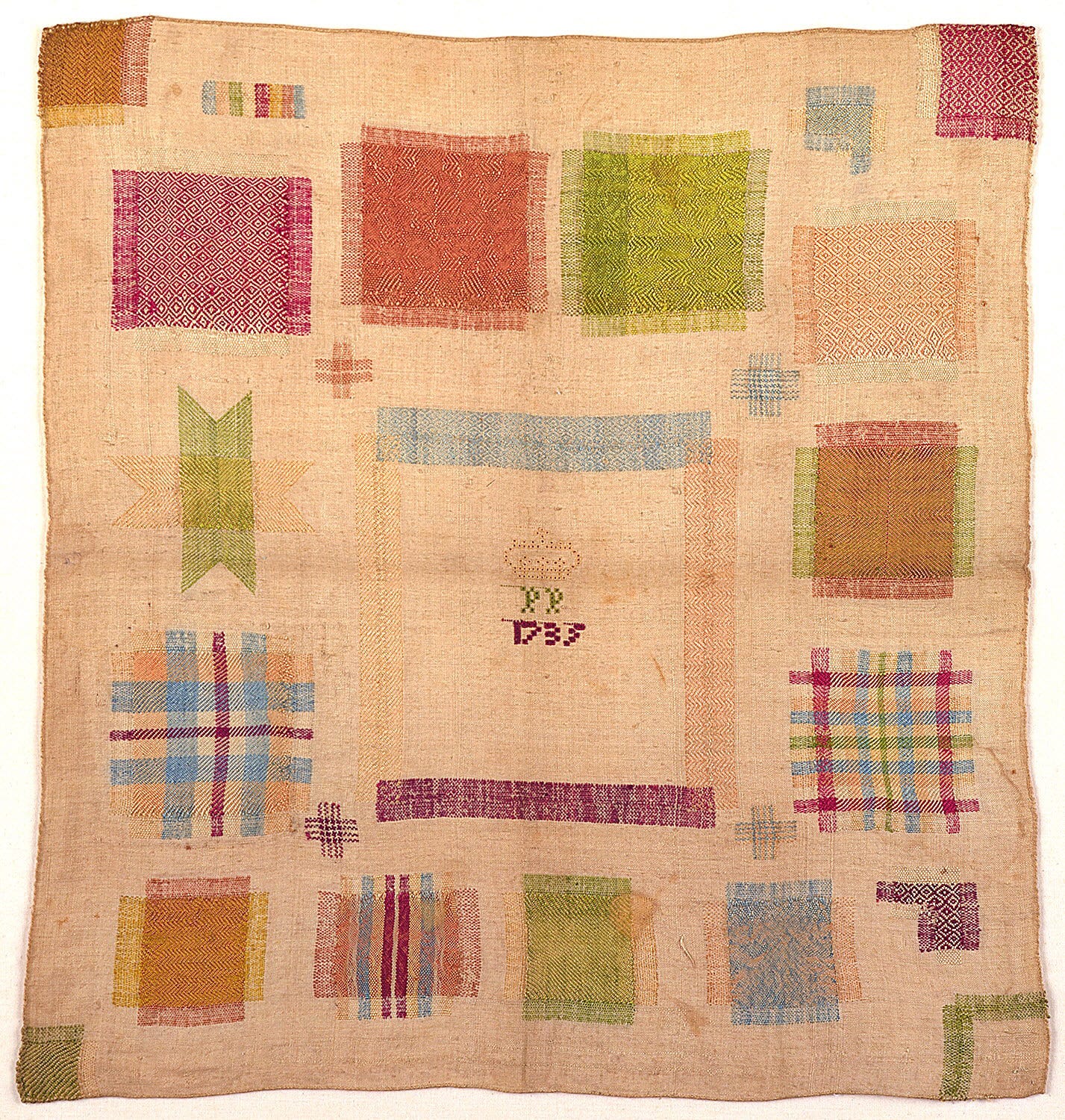
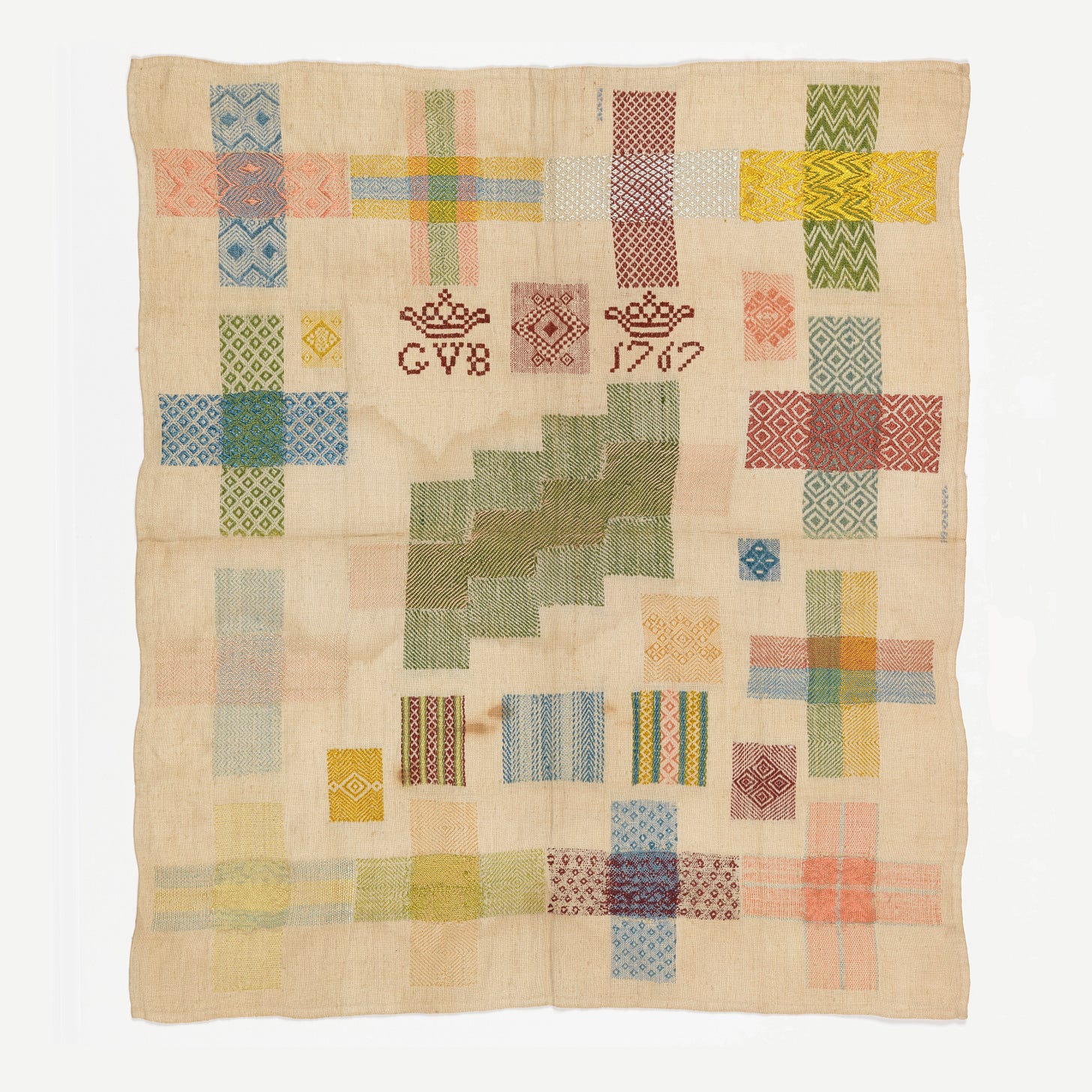
These samplers, and the range of skills they display, are frankly astonishing. The fineness and quality of the work is incredible. In the samplers, the darns are highlighted by the use of brightly-colored threads, but you can imagine that when worked in a thread that matched the background fabric, they’d be basically invisible.
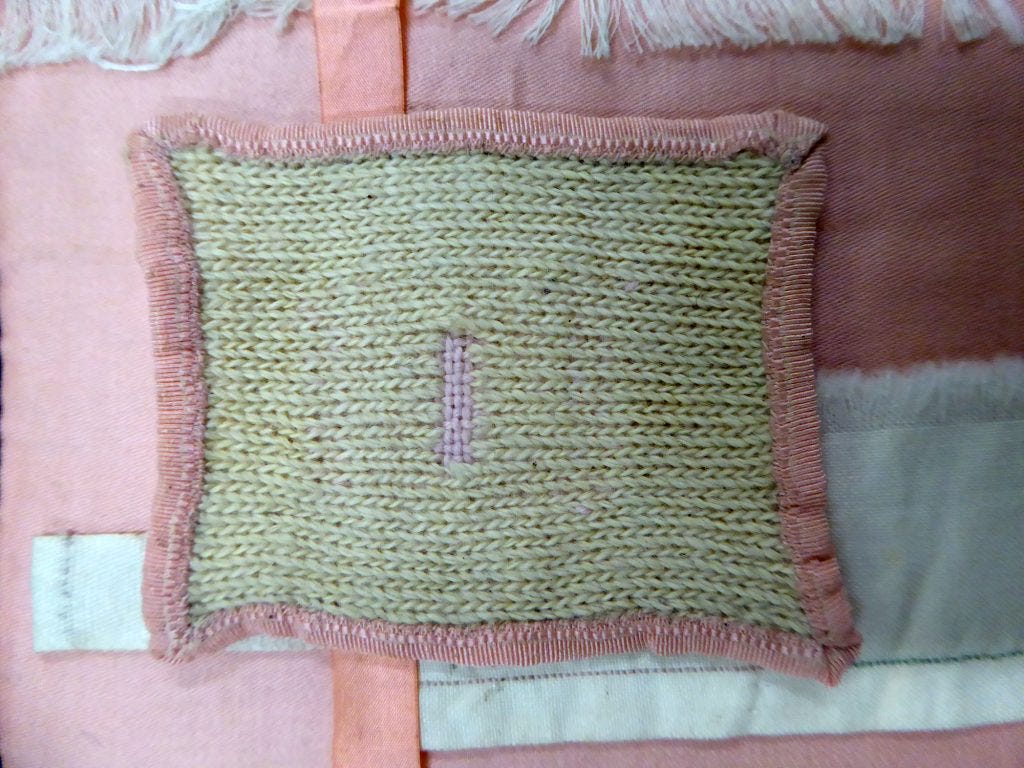
Examples of darning samplers on knitted fabrics survive also, but they tend to be from the later 19th-century. Taken chronologically, these samplers also provide a good look at the evolution of fabric styles and trends through time - the sample above, on a larger-gauge knitted fabric, looks like it might be referencing a fisherman’s gansey.
(There are so many wonderful samplers in museum collections - I highly recommending searching the collections at the Met, the Cooper Hewitt, the V&A and the museum at RISD. Use keywords like ‘darned’ or ‘darning’.)
I am far from the first person to be creatively inspired by these darning samplers. My introduction to the world of visible mending and darning came through Tom of Holland, whose Visible Mending Programme advocated for ‘wear[ing] your darn like a badge of honor’. He often references 18th- and 19th-century samplers in his work, and created Tom’s Amazing Jumper, a beautiful darning sampler of his own:
These days, darning has even become an art-form worthy of galleries. The textile artist Celia Pym shows her mended garments, most of them featuring extensive darning, in exhibitions and museums across the world.
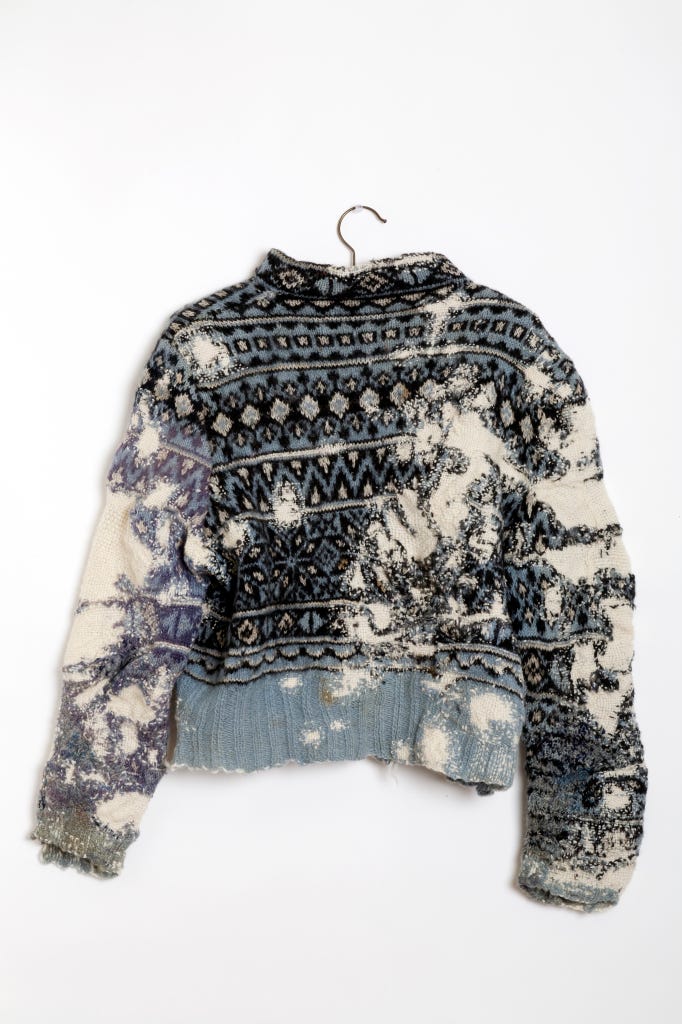
I like this idea of repair as an art form. To mend clothing is to engage deeply with the fabric, to contemplate it’s past and future and it’s relation to the self. This is both a creative and, in our modern era of over-consumption, a radical act. That’s art.
This weekend I finished an embroidery piece that features small bits of darning. As a sampler I would say this is a semi-failure, as my darns are very imperfect, but as a color and texture study I quite like it. (It was good practice, too.)
There are plenty of books on clothing repair available, but I wanted to highlight a couple of my favorites for anyone who might be interested in learning to darn (or even patch) their own clothes and home textiles.
Molly Martin, who is an incredible painter and illustrator and also has an excellent Substack of her own, is the author of The Art of Repair. This book features essays on mending and tutorials for techniques like patching and Sashiko stitching; I use Molly’s method for the Double-Folded Edge Patch all the time.
Flora Collingwood-Norris, a knitwear designer and mender from Scotland, has written Visible Creative Mending for Knitwear, and I love her techniques. She covers regular darning, Swiss darning, and embroidery, and offers workshops on her website too. (I highly recommend giving her Instagram account a follow as well.)
OK, that’s it from me this week! I hope you’ve enjoyed this little series on mending, and if you haven’t, I’ll be back next week with the January reading round-up. Talk to you soon!
Best,


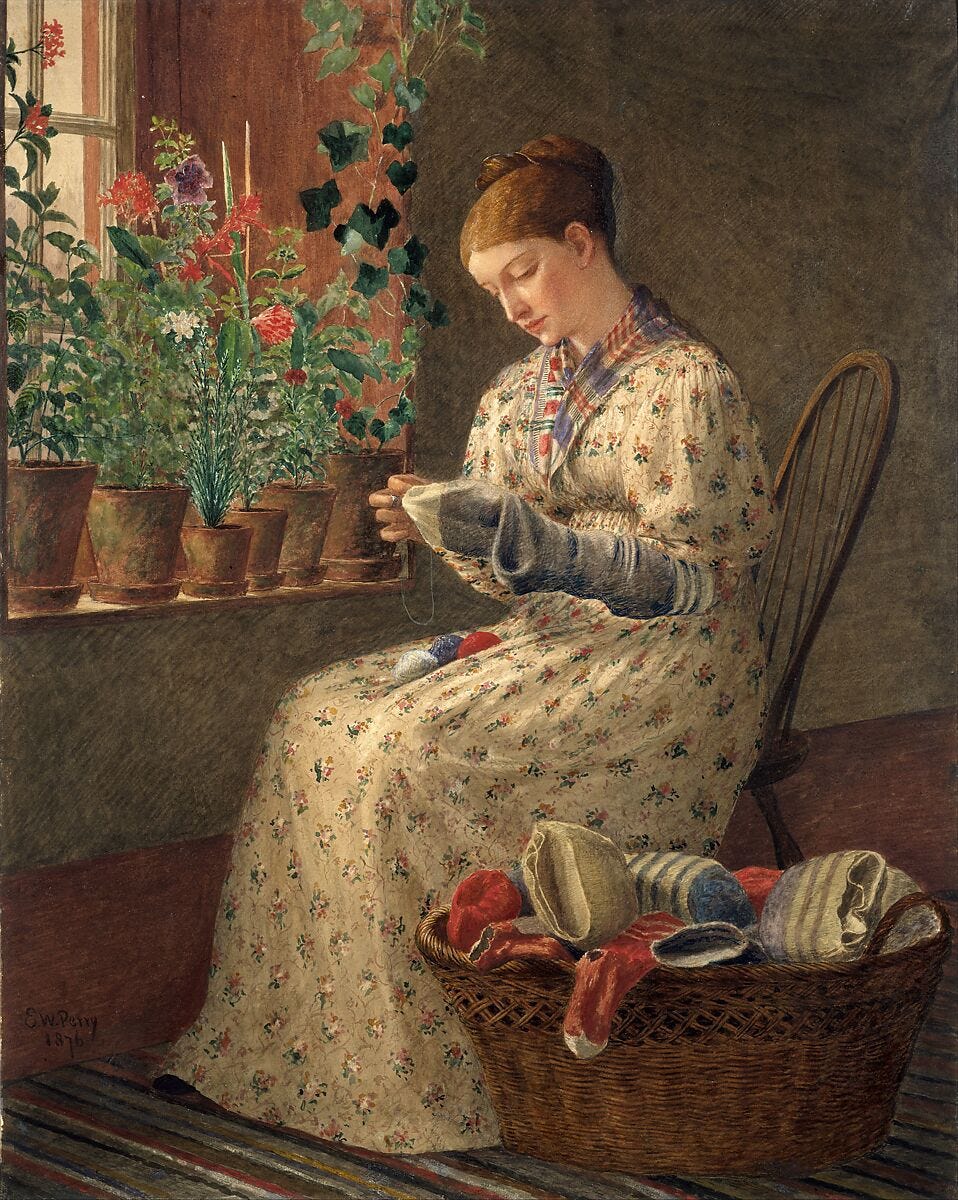
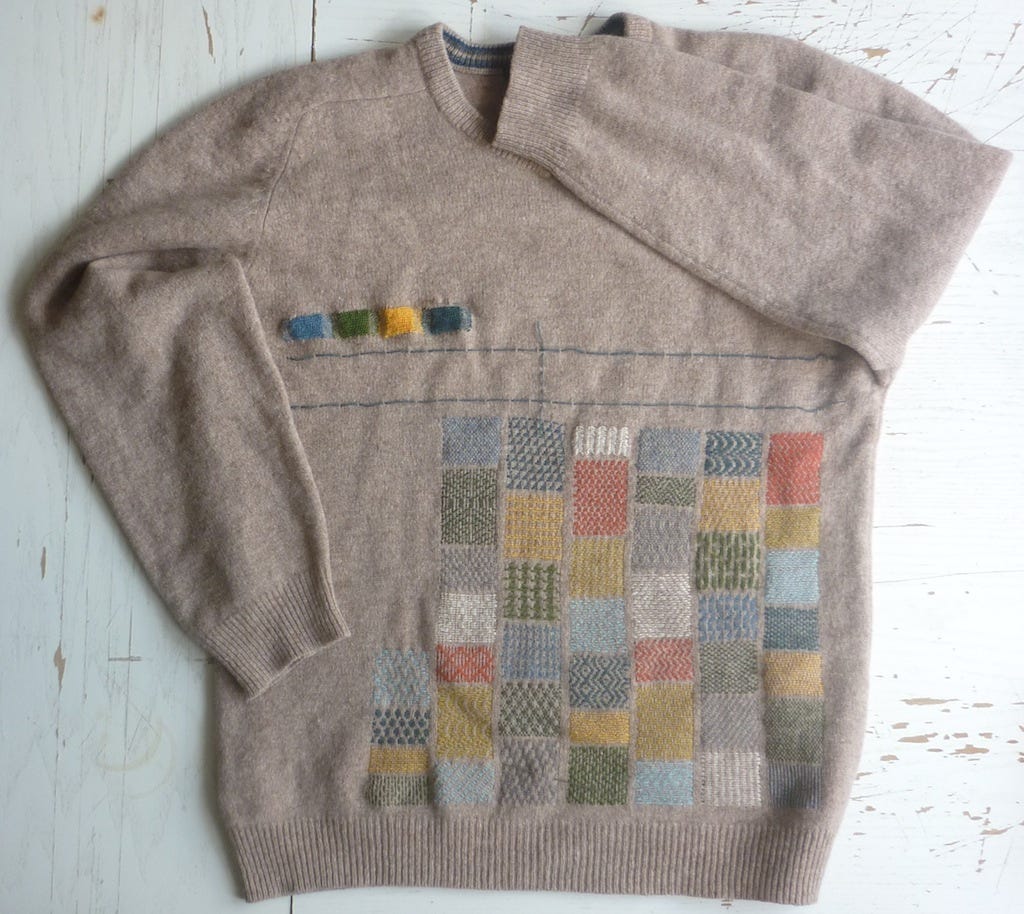

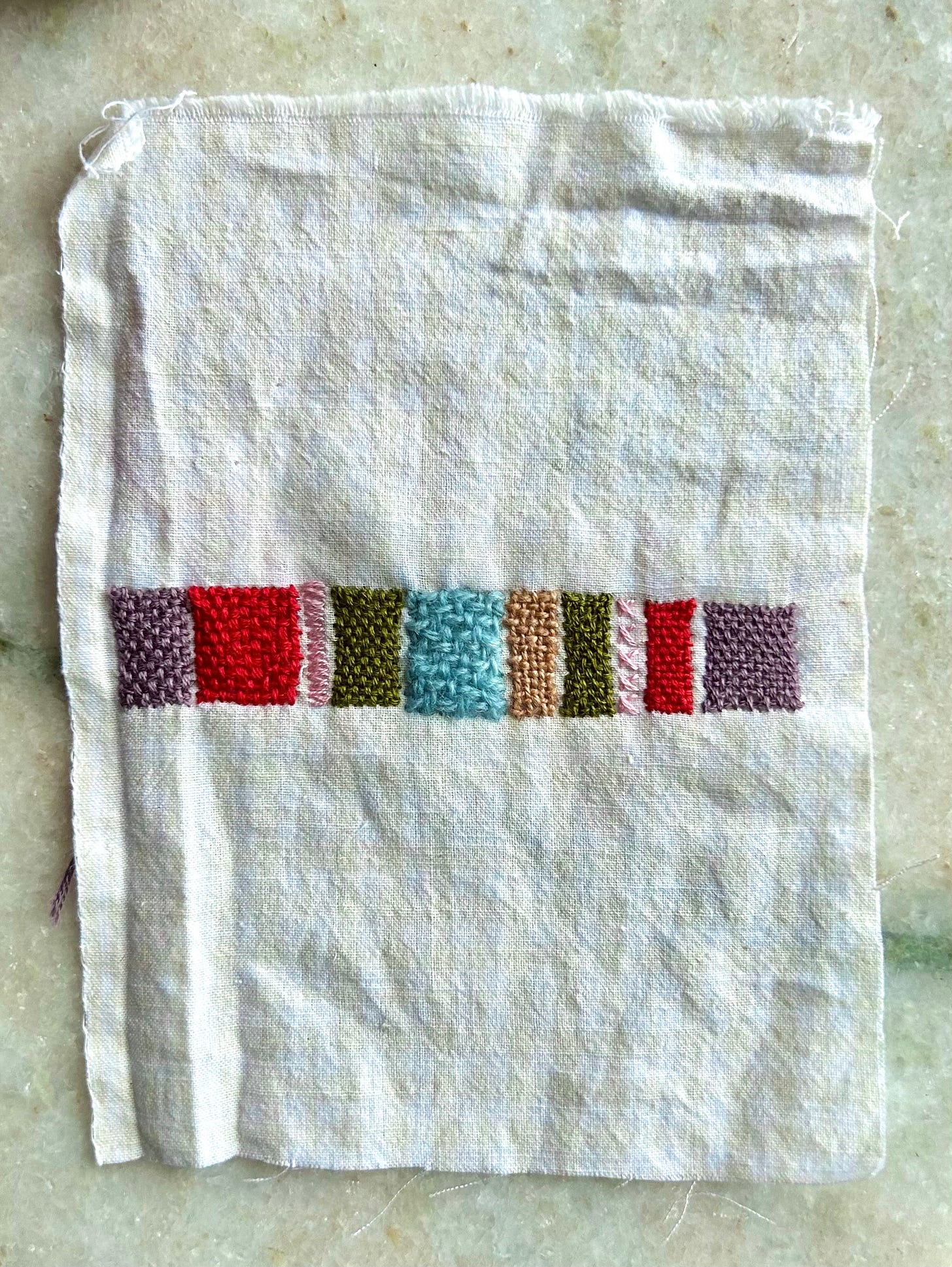

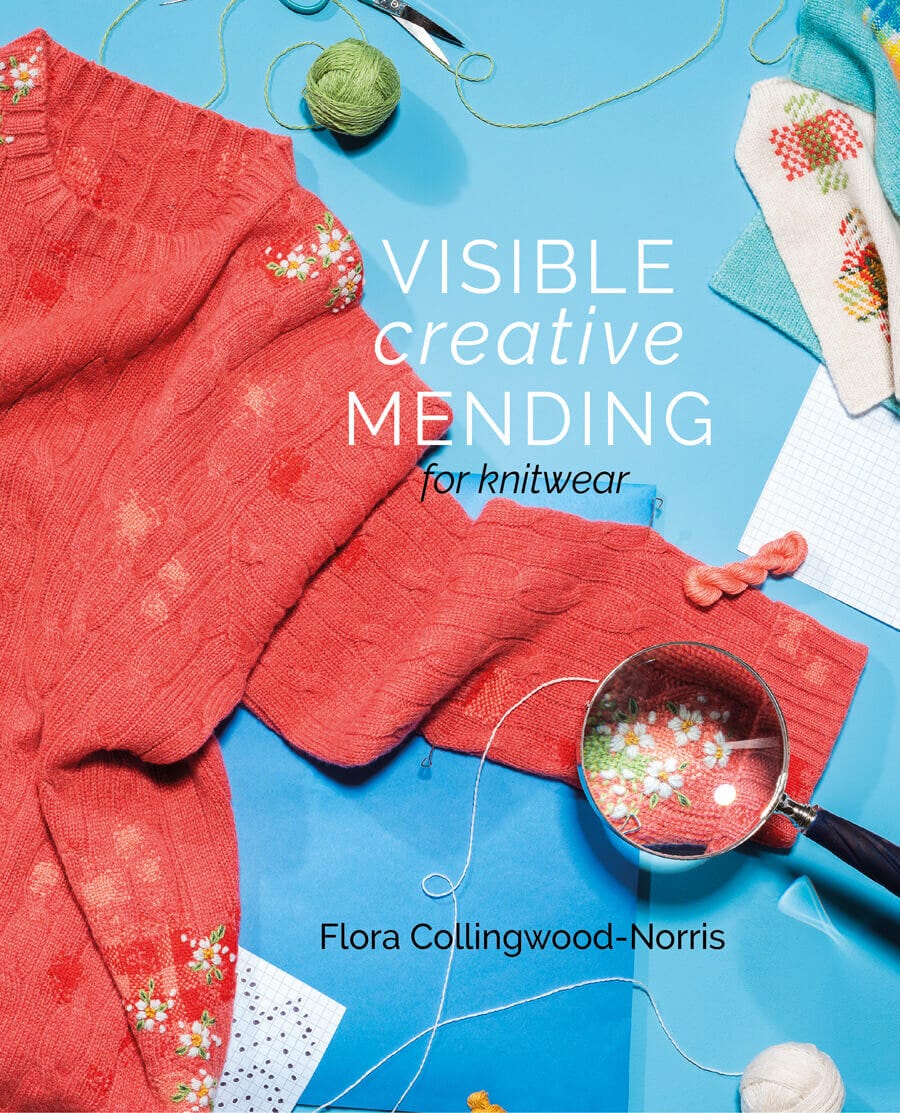
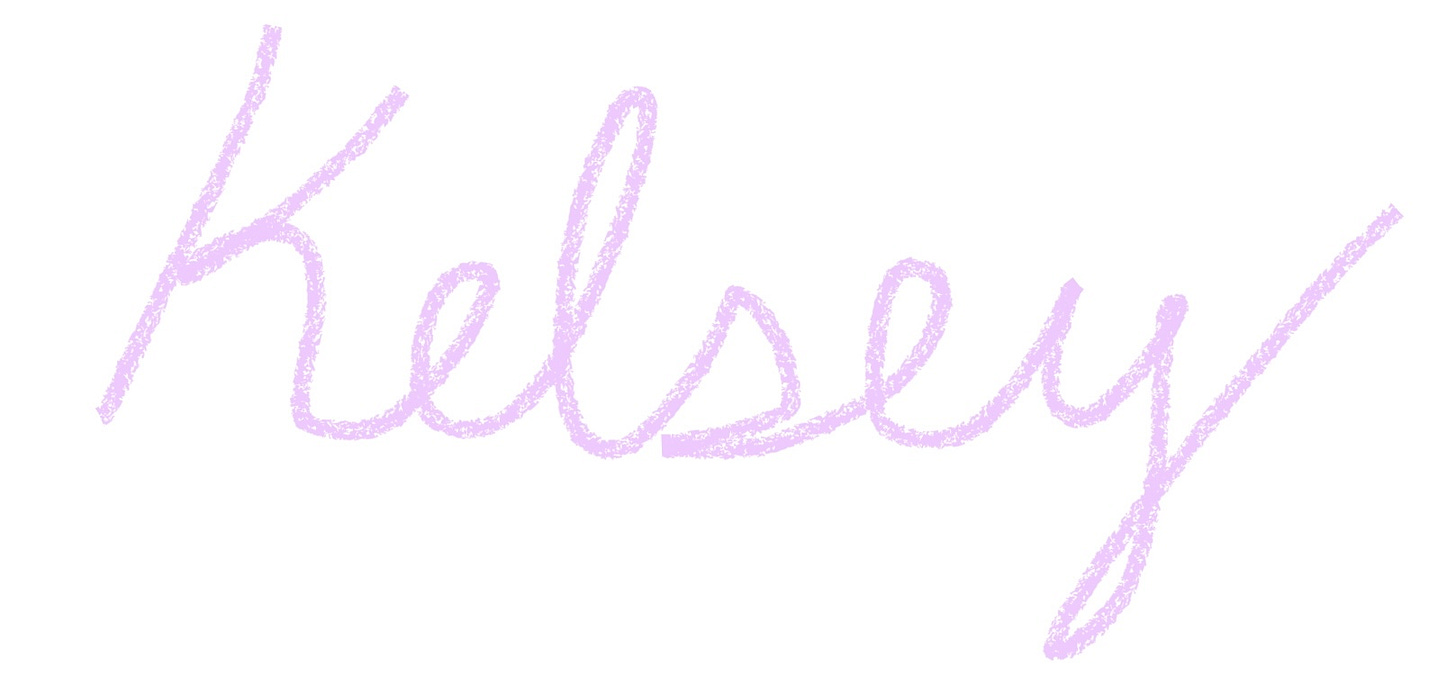
Okay, you talked me into it. lol. Thank you for all this info (and gorgeous photos) on darning. I've put Martin's book on hold at the library. I will learn how to darn properly.
This is a great edition about mending! Love the painting, love the samplers, love the inspiration!